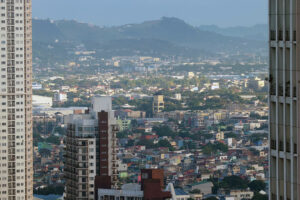LOAN GROWTH slowed for the third straight month in June, reflecting the impact of the Philippine central bank’s aggressive monetary tightening to curb inflation.
Preliminary data from the Bangko Sentral ng Pilipinas (BSP) showed outstanding loans of big banks expanded by 7.8% to P10.99 trillion in June from P10.19 trillion a year earlier.
The growth in bank lending was slower than 9.4% in May and 12.1% in June 2022.
“The continued moderation of bank lending highlights the impact of the tightening carried out by the BSP since mid-2022,” ING Bank N.V. Manila Senior Economist Nicholas Antonio T. Mapa said in an e-mail.
He noted that interest rate hikes are designed to slow economic growth and help ease demand-side pressure on inflation.
From May 2022 to March 2023, the BSP raised the benchmark interest rate by 425 basis points (bps) to a near 16-year high of 6.25%.
While rates were left unchanged for a third straight meeting on Aug. 17, the Monetary Board signaled it is ready to resume tightening, if necessary, amid risks to the inflation outlook.
Security Bank Corp. Chief Economist Robert Dan J. Roces said the weaker expansion in bank lending could be traced to economic uncertainties from elevated inflation.
Headline inflation declined to 5.4% in June from 6.1% in May. Despite the decline, it marked the 15th straight month of inflation exceeding the BSP’s 2-4% target band.
“This might have made businesses more cautious about borrowing, leading to a decline in production loans. Additionally, tightened lending standards reflected market risks,” Mr. Roces said.
BSP data showed outstanding loans to residents grew by 7.8% to P10.67 trillion in June from P9.89 trillion a year earlier. However, growth was slower than 9.3% in May and 11.8% in June 2022.
Credit for productive activities declined by 6.3% to P9.55 trillion, slower than 7.9% in May and 11.9% a year earlier.
“With loan growth slower for the [production] sector, we can expect smaller investment outlays, fewer workers hired and overall, less economic activity,” Mr. Mapa said.
Annual loan growth was recorded in several sectors such as electricity, gas, steam and air-conditioning supply (11.8%), information and communications (11.2%), and wholesale and retail trade, and repair of motor vehicles and motorcycles (9.6%).
However, there was an annual decline in loans for professional, scientific and technical activities (-29.2%), education (-5.8%), and arts, entertainment and recreation (-1.6%).
“On the other hand, the surge in consumer loans indicates a shift in where credit is flowing, perhaps due to increased consumer confidence and economic sectors reopening,” Mr. Roces said.
Consumer credit jumped by 23.7% to P1.12 trillion from P906.3 billion a year ago. This was slightly faster than the 22.6% in May.
Credit card loans expanded by 29.3% in June, while salary-based general purpose consumption loans surged by 48.8%. Motor vehicle loans rose by 6.4%.
“Consumer loans remained on the uptick, largely because consumer loans are not generally based on the BSP policy rate. Just recently, the BSP opted to retain the 3% cap on credit card lending, so we do not expect this sector to slow anytime soon,” Mr. Mapa said.
The Monetary Board maintained the ceiling for credit card charges at 3% a month or 36% a year. The monthly add-on rate that credit card users can charge on installment loans is still at 1%, while the maximum processing fee for credit card cash advances remained at P200 for each transaction.
The BSP will review the ceilings on credit card transactions after six months.
“Looking ahead, the trajectory for loan growth remains contingent on several dynamics. We might see a continued rise in consumer loans if economic conditions improve, most especially the sentiment on it,” Mr. Roces said.
The recovery in production loans will depend on global and local economic conditions, such as interest rate adjustments by central banks, he added.
While banks will benefit from higher interest rates, Mr. Mapa said consumers and companies will be “feeling the heat” from high borrowing costs.
“With the BSP noting that policy tightening operates with a lag, we can expect bank lending to continue to slow (as it did in 2019) in the coming months, which could be a sign that growth and productive capacity will be capped,” he added.
BSP Governor Eli M. Remolona, Jr. earlier said the central bank remains hawkish, and cutting policy rates is not on the table, at least not at the Monetary Board’s meeting next month.
The Monetary Board will have its next policy review on Sept. 21. — Keisha B. Ta-asan






